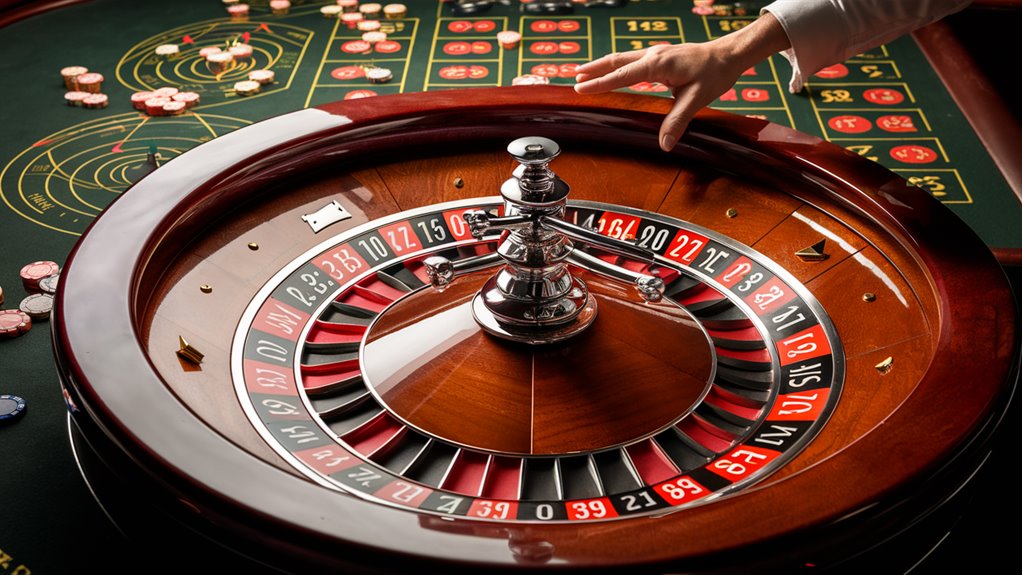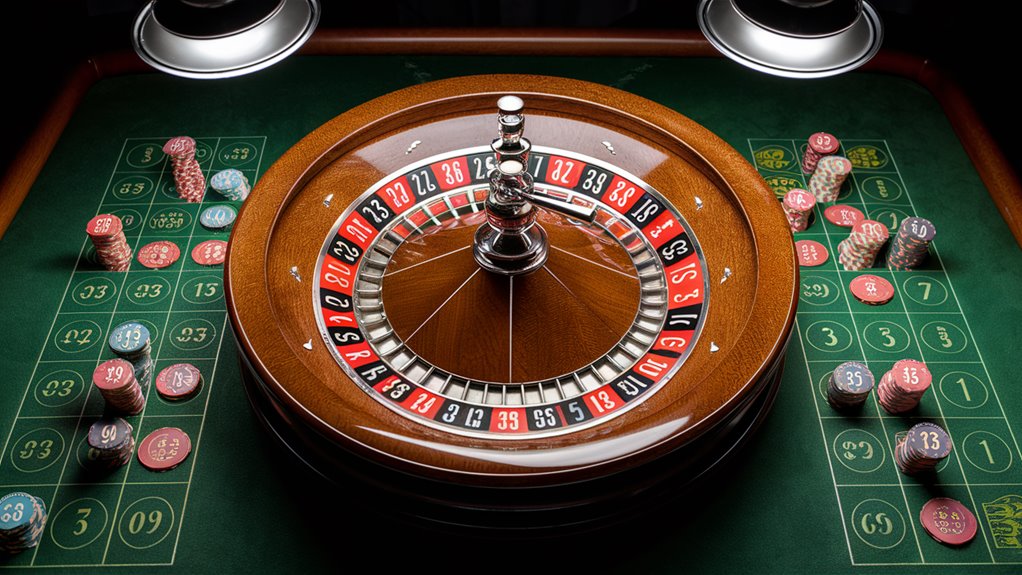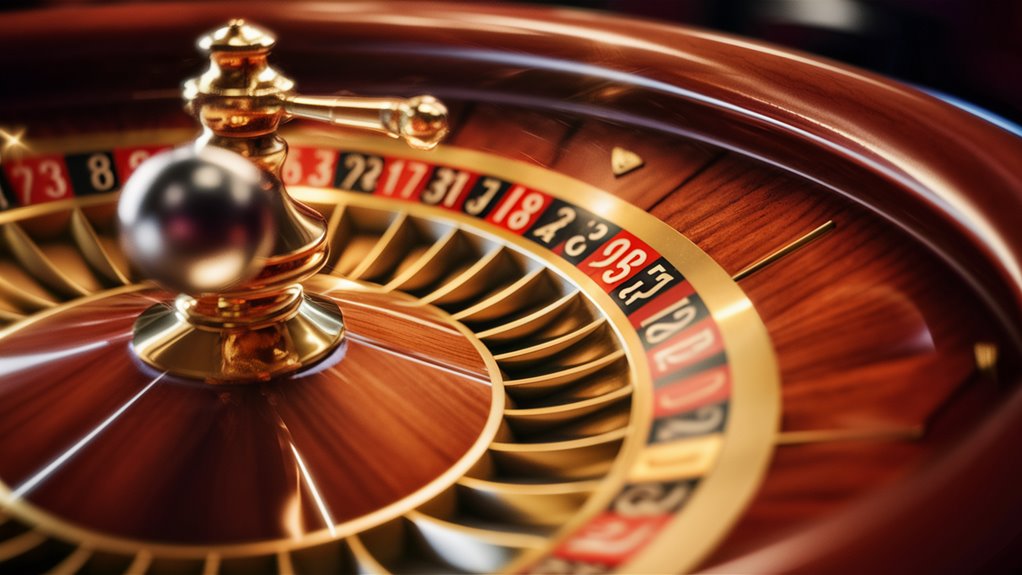
Roulette Tips: The Numbers Behind the Guesses

The math behind roulette offers insights into the game’s odds. European roulette wheels provide better odds with a 2.7% house edge, whereas American wheels exhibit a greater 5.26% house advantage due to the extra double-zero spot.
Getting Roulette Chances
Outside bets such as red/black and odd/even offer the highest winning chance at 48.6%, though the casino’s edge remains influential. Popular bets like column bets and dozen bets present a 32.4% winning chance, while straight-up number bets yield a 2.7% chance on European wheels.
House Edge and Expected Losses
Strategies like Martingale or D’Alembert struggle against roulette’s adverse outcomes. Players typically expect to lose:
- $2.70 per $100 bet on European wheels 카지노사이트 추천
- $5.26 per $100 bet on American wheels
The Role of Statistics
The law of large numbers ensures casinos profit from roulette’s inherent math. Despite potential short-term wins, the house edge remains constant regardless of bets or strategies. Understanding this math is crucial for informed play, though no system guarantees wins.
Single Number Bets Explained
Knowing Single Number Chances in Roulette
The Math of Direct Bets
Straight-up betting offers a maximum win of 35:1 but with the lowest win probability. This direct bet exemplifies roulette’s odds.
European vs American Roulette Odds
On a European roulette wheel (37 numbers, 0-36), single number bets have a 1/37 (approximately 2.7%) win chance. In the American variant, which includes an additional 00, this chance decreases to 1/38 (roughly 2.6%).
Analyzing House Edge
The casino’s mathematical edge is apparent in these odds:
- Real odds: 36:1
- Payout: 35:1
- Single number bet: $1
- Total outcomes: 37 possibilities
- Max return: $36 ($35 win + $1 initial bet)
- Statistical loss: $1 per full cycle
The Impact on Betting Strategy
Single number odds are crucial for devising other bet combinations. The 2.7% house edge remains consistent across most European roulette bets, playing a vital role in:
- Strategy planning
- Risk assessment
- Bankroll management
- Informed decision-making
Wide Bet Systems Overview
Understanding Wide Bet Systems in Roulette
Core Wide Betting Options
Wide betting systems emphasize extensive chance groups, covering more of the roulette wheel for frequent wins compared to inside bets. Common wide bets include red/black, odd/even, and high/low combinations, each covering 18 numbers and offering a 48.6% chance of success on European wheels.
Mathematics of Wide Bet Chances
The primary house edge remains fixed at 2.7% for European wheels and 5.26% for American wheels among wide bet options. Column and dozen bets, covering 12 numbers with a 2:1 payout, maintain a 32.4% success chance.
Strategic Considerations and House Edge
Wide betting strategies deliver more frequent wins due to broader number coverage but cannot overcome the house edge. Mathematically, staking $100 on any wide bet implies an expected loss of $2.70 on European wheels. This consistent probability holds firm, irrespective of betting plans or combinations devised to mitigate variance through multiple wide bets.
The Martingale Strategy
The Martingale Strategy: Complete Betting System Analysis

Understanding Basic Steps
The Martingale Strategy, a renowned progressive betting plan, is popular in roulette and similar games. This approach involves players doubling their stake following a loss, while maintaining the same betting choice. A prudent beginning is the minimum table wager on even-money bets such as red/black, odd/even, or 1-18/19-36.
Progression and Strategy Development
The strategy follows a strict doubling pattern: An initial $10 wager increases to $20, $40, $80, etc., after consecutive losses. A win resets this progression, theoretically recouping all past losses plus a profit equal to the initial bet. The wager progression maintains mathematical consistency throughout.
Limits and Risks
Table Limits
Casino wager caps impose an ultimate ceiling for progression, hindering endless doubling and potentially jeopardizing strategy success.
Financial Requirements
Extended losing streaks pose significant bankroll depletion risks. Eight consecutive losses from a $10 base stake require a $1,280 wager, underscoring the substantial funding needs for minimal profit potential.
House Edge Factor
The inherent zero(s) sustain a constant house advantage irrespective of wager size. This persistent aspect ensures the casino retains its edge despite progressive betting.
Strategic Insights
Effective use necessitates prudent bankroll management, awareness of table limits, and recognition of intrinsic strategy risks. Mathematical progression, albeit theoretically sound in ideal conditions, encounters real-world constraints in actual casino environments.
Understanding House Edge
Comprehending Casino House Edge
Determining Roulette House Edge
The house edge calculation for roulette demands precise mathematical techniques centered on probability theories and payoff structures. European roulette, featuring 37 total pockets (numbers 0-36), serves as the standard model for these calculations.
Single Number Bet Analysis
For a straight-up wager, the math unfolds as follows:
- Win likelihood: 1/37
- Lose likelihood: 36/37
- Payoff ratio: 35:1
- Expected value formula: (35 x 1/37) – (1 x 36/37) = -0.027 (-2.7%)
House Edge and Player Losses
The -2.7% house edge signifies an anticipated loss of $2.70 per $100 wager over time. This fixed mathematical edge persists across most European roulette betting options, forming a guiding metric for informed play.
European vs American Roulette Edge
Key edge discrepancies:
- European roulette: 2.7% house edge (single zero)
- American roulette: 5.26% house edge (double zero)
- Impact: European roulette offers significantly superior odds
Fundamental Math Principles in Roulette
The probability calculations remain constant regardless of betting strategies. While payoffs and win odds fluctuate among bet types, the underlying house edge retains its mathematical stability, guaranteeing the casino earns profit over extended play.
Big Bet Mathematics
Big Bet Mathematics in Casino Games
Understanding Bet Progression Strategies
Progressive betting strategies utilize mathematical frameworks to adjust wager sizes based on preceding game results. These strategies primarily fall into two categories: positive progression and negative progression betting systems.
Negative Progression Mathematics
The Martingale system illustrates negative progression mathematics through substantial wager increases. The sequence adheres to the progression 2^n, where n represents consecutive losses:
- Initial bet: $1
- First loss: $2
- Second loss: $4
- Third loss: $8
- Fourth loss: $16
This progressive growth aims to recoup all previous losses plus a one-unit profit upon winning.
Positive Progression Evaluation
Paroli system mathematics hinges on increasing stakes after victories. The formula maintains a 1:1 ratio with doubling following wins:
- Base bet remains unchanged after losses
- Winning bets trigger predetermined doubles
- Sequence resets following set winning streaks
- Risk management remains proportional to available funds
Statistical Implications and House Edge
Progressive betting sequences operate independently from core game mathematics:
- European Roulette retains a 2.7% house edge
- American Roulette maintains a 5.26% house edge
- Progressive strategies cannot alter negative expected outcomes
- Table limits and financial constraints cap sequences swiftly
Mathematical Constraints
The rapid growth characteristic of progressive betting introduces strict limitations:
- Rapidly expanding wager demands
- Risk of bankroll depletion
- Casino-imposed upper betting limits
- Long-term mathematical incapability of overcoming house edge
European Vs American Wheel Odds
European vs American Roulette Wheel Odds: Detailed Analysis
Wheel Design’s Impact on House Edge
The primary wheel design disparities between European and American roulette dramatically alter mathematical player odds. The European wheel’s single zero (0) structure affords superior winning chances compared to the American wheel’s double zero (0, 00) configuration.
House Edge Comparison
The European roulette wheel maintains a 2.7% house edge, resulting in projected losses of $2.70 per $100 stake over time. Conversely, the American roulette wheel features a 5.26% house edge – almost twice that of the European version. This substantial difference is attributed to the added double zero slot, despite retaining the same payout ratios. Exploring the World of Online Bingo in 2025
Probability Evaluation for Bet Types
Direct Bet Probability
- European Wheel: 1 in 37 chance (2.7% house edge)
- American Wheel: 1 in 38 chance (5.26% house edge)
This probability discrepancy persists across all bet types, from direct to wide bets. The mathematical edge clearly favors European roulette, where the single zero configuration offers better odds for prolonged play and enhanced bankroll longevity.
Strategic Recommendations
Players seeking optimal winning prospects should select European roulette tables whenever available. The significant house edge disparity has tangible implications on extended play and the effectiveness of betting strategies. The additional double zero in American roulette poses a more formidable statistical barrier to profitability.